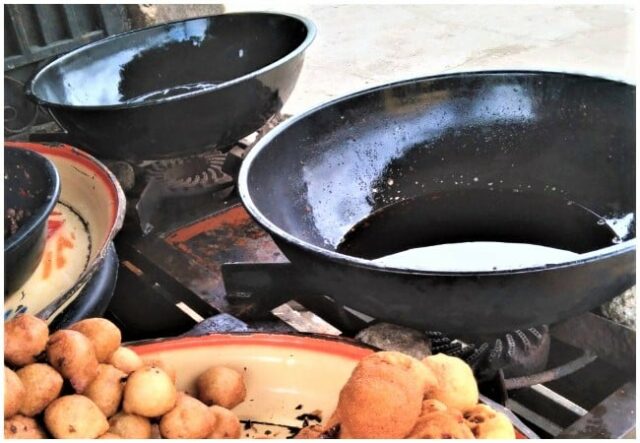A new study by the University of British Columbia researchers has discovered that frying common meals like pancakes, eggs, sausages, and stir-fries produced carbon aerosols that can damage the lungs.
The study was published in the journal, Environmental Science: Atmospheres.
According to the research, cooking a common meal at home in a frying pan on the stove produces potentially harmful emissions.
It was revealed that when exposed to sunlight, the aerosols formed become more harmful toxins.
The study, however, suggests that improving ventilation in kitchens and using cleaner cooking methods could help reduce exposure to these pollutants.
According to the researchers, frying these foods triggers the release of similar pollutants that flood the outdoor air in built-up cities, and are known to increase the risk of lung disease.
The authors noted that previous studies involving chefs showed that exposure to cooking emissions is associated with chronic diseases in chefs.
But the new experiment is the first in which researchers revealed certain compounds can form in domestic kitchens.
To measure the amount of pollutants produced by frying the meals, researchers said they set out to capture the smoke and emissions let off by cooking using a tool called an impinger, which is a small bottle, to collect airborne chemicals.
Upon analyzing the emissions, it was found that the cooking produced carbon aerosols, small particles or liquid droplets in the air, called BrCOA.
The aerosols were then exposed to overhead lighting in typical houses and natural sunlight and it was found that all the meals released the same amount of carbon aerosols that produced a harmful compound called singlet oxygen when exposed to light.
Singlet oxygen is a highly reactive compound that can cause lung damage and contribute to the development of cancer, diabetes and heart disease, previous studies have shown.
While all the meals produced singlet oxygen at around the same concentration, the highest amounts were detected when the fumes were exposed to sunlight – meaning kitchens with natural sunlight streaming in through windows could have the most compounds in the air.
Not only do these compounds form while cooking, but the scientists said they can linger in the air long after you’ve eaten, leading to the persistent degradation of your household air quality.
The study found the amount of singlet oxygen produced by cooking was present at similar levels to environmental pollution measured outdoors, but could be more dangerous indoors because it is a confined space with less ventilation.
While singlet oxygen compounds can be useful – sometimes used as a cancer therapy to cause cancer death – they have also been associated with damage to the body’s cells.
Research has shown the chemical can also cause DNA and tissue damage, particularly of the skin and eyes and can cause swelling, blistering and scarring. Because this is the first study of its kind, the scientists said more research is needed to fully understand cooking-related singlet oxygen and other cooking emissions.
UBC chemistry assistant professor and lead author of the study, Dr Nadine Borduas-Dedekind said: “Our next steps include determining just how this oxidant might affect humans and how much we’re breathing in when we cook. Could it play a role in some cooking-related diseases?”
The researchers recommend turning on kitchen venting fans, opening windows for inflow of fresh air and using air filter in the kitchen.
Also, it was advised that cooking oil with a high smoke point, such as avocado oil, can also help mitigate indoor pollution.









